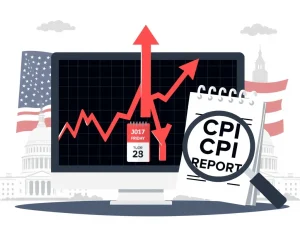Bitcoin Price Warning: Tom Lee Forecasts Potential 50% Plunge

The cryptocurrency world often buzzes with optimism. Many investors believe institutional adoption ensures stability. However, a stark warning has emerged from a prominent figure. Tom Lee, chairman of BitMine, recently cautioned that the Bitcoin price is not immune to significant downturns. Despite increasing Wall Street interest, a 50% crash remains a real possibility. This crucial insight challenges the narrative of unwavering growth and calls for careful consideration among crypto enthusiasts.
Understanding Bitcoin Volatility: A Historical Perspective
Bitcoin has always been known for its dramatic price swings. Early adopters often celebrated this inherent Bitcoin volatility. It presented both immense opportunities and considerable risks. Over its history, the leading cryptocurrency has experienced multiple periods of extreme drawdowns. For instance, after reaching nearly $20,000 in late 2017, Bitcoin plunged by over 80% in the following year. This significant correction deeply impacted many investors. Similarly, following its all-time high of $69,000 in November 2021, the asset saw its value halved by early 2022. Such historical precedents highlight Bitcoin’s inherent nature. They remind us that even strong bull markets can reverse sharply. Therefore, understanding this pattern is vital for informed decision-making.
Many factors contribute to Bitcoin’s unpredictable movements. These include regulatory news, macroeconomic shifts, and technological developments. Speculative trading also plays a significant role. Small market caps, compared to traditional assets, can amplify these effects. Consequently, Bitcoin’s price can react intensely to both positive and negative news. This makes it a fascinating yet challenging asset for investors to navigate. Looking back at these cycles helps contextualize current warnings. It prevents overconfidence during periods of rapid growth.
Tom Lee’s Bitcoin Forecast: Echoes of the Stock Market
Tom Lee, a respected voice in financial analysis, offers a compelling perspective. He argues that Bitcoin’s movements often mirror the stock market. More importantly, he suggests Bitcoin amplifies these movements. “I’m sure there will be 50% drawdowns,” Lee stated in a recent interview. He points to the stock market’s own frequent corrections. The S&P 500, for example, experiences 25% drawdowns with notable regularity. Lee elaborates, “The stock market has made a lot of progress over the last six years; we’ve had an unusually large amount of 25% drawdowns.” He then draws a direct parallel: “So if the S&P is down 20, Bitcoin could be down 40.” This comparison provides a crucial framework. It suggests that Bitcoin, despite its unique characteristics, remains tied to broader market sentiment. Therefore, investors should not view it in isolation.
Lee’s Tom Lee Bitcoin forecast indicates that institutional interest does not eliminate this risk. Many believe that the influx of institutional money would stabilize Bitcoin. They argue that traditional finance players bring maturity to the market. However, Lee’s analysis suggests otherwise. He believes that even with increased adoption, Bitcoin’s correlation with traditional assets persists. This correlation means that a downturn in global equity markets could trigger a substantial crypto market crash. His warning serves as a reminder. Even sophisticated investors must prepare for significant corrections. They should understand the interconnectedness of financial markets.
Institutional Love and Bitcoin ETFs: A False Sense of Security?
The introduction of spot Bitcoin ETFs marked a significant milestone. Many celebrated these products as a gateway for mainstream investors. Proponents argued that ETFs would bring greater liquidity and stability. They believed these vehicles would reduce the extreme swings seen in prior cycles. Indeed, the initial excitement surrounding these products was palpable. Billions of dollars flowed into these new investment avenues. This suggested a strong institutional appetite for Bitcoin exposure. However, Tom Lee’s analysis challenges this widespread optimism. He posits that while institutional involvement adds legitimacy, it does not fundamentally alter Bitcoin’s risk profile. Instead, it might simply integrate Bitcoin more deeply into existing market dynamics.
Lee’s argument suggests a nuanced understanding. Institutional capital, while substantial, may not act as a permanent stabilizing force. Rather, it could simply mean Bitcoin becomes more susceptible to the same macro factors affecting traditional assets. If large institutional investors face liquidity issues or market corrections in their broader portfolios, they might liquidate Bitcoin holdings. This action could easily trigger a substantial crypto market crash. Consequently, the idea that Wall Street’s embrace inherently de-risks Bitcoin needs re-evaluation. Investors must remain vigilant. They should consider all potential scenarios, even those involving significant drawdowns.
The Developing “Longer Cycle” and Future Price Targets
Beyond immediate volatility, Tom Lee also discussed a fundamental shift in Bitcoin’s market behavior. He argued that Bitcoin has broken from its typical four-year cycle. This traditional cycle often pointed to a peak around October. Instead, Lee suggests a “longer cycle” is now developing for Bitcoin. This theory implies that market phases, both bullish and bearish, could extend over longer periods. This would fundamentally alter how investors approach timing and strategy. A longer cycle could mean prolonged accumulation phases. It could also mean more extended bull runs. Conversely, it could also imply more drawn-out corrections. This perspective requires a re-evaluation of established patterns. It encourages a more patient, long-term approach to Bitcoin investing.
Despite his warnings about potential crashes, Lee remains bullish on Bitcoin’s long-term trajectory. He recently reiterated his ambitious forecast. Lee expects the Bitcoin price to reach between $200,000 and $250,000 by year-end. This bold prediction highlights his confidence in Bitcoin’s ultimate value. However, he carefully frames this within the context of volatility. A 50% correction from a $250,000 peak would still bring Bitcoin to roughly $125,000. This level is still significantly above current all-time highs. This scenario underscores the potential for both massive gains and sharp, albeit temporary, reversals. It emphasizes the need for investors to manage expectations carefully. They should prepare for significant price fluctuations.
Echoes of Caution: Peter Brandt and Historical Parallels
Tom Lee is not alone in his cautionary stance. Veteran trader Peter Brandt has also voiced similar concerns. Brandt, known for his historical market analysis, recently drew a striking parallel. He noted that Bitcoin’s price chart mirrored a pattern observed in the soybean market during the 1970s. This period preceded a dramatic 50% plummet. Such comparisons from seasoned analysts carry significant weight. They remind investors that market psychology often repeats itself. Patterns, even across different asset classes, can offer valuable insights. Brandt’s perspective reinforces the idea that no asset, regardless of its revolutionary nature, is immune to historical market dynamics. His analysis further supports the need for prudence. It advises against complacency in a seemingly ever-rising market.
Historical data strongly supports these warnings. As mentioned, Bitcoin suffered a brutal 50% decline from its November 2021 peak. It plunged from $69,000 to around $35,000 in just over three months. This rapid devaluation demonstrates how quickly fortunes can change. It illustrates the swiftness with which a crypto market crash can unfold. Such events serve as stark reminders of the inherent risks. They highlight the importance of risk management strategies. Diversification and careful position sizing become critical tools. These tools help investors navigate periods of extreme Bitcoin volatility. Learning from past cycles is crucial for future resilience.
Counter-Arguments and Optimistic Outlooks
While warnings of a potential Bitcoin price crash resonate, not all analysts share this bearish sentiment. Prominent figures like Michael Saylor, Strategy chairman, maintain a resolutely optimistic view. Saylor famously declared in June, “Winter is not coming back.” This statement reflects a strong belief in Bitcoin’s long-term value proposition. He argues that Bitcoin’s fundamental utility as a scarce digital asset continues to strengthen. Increased corporate adoption and growing global recognition contribute to this strength. Saylor’s perspective often emphasizes Bitcoin’s role as a hedge against inflation. He also highlights its potential as a global reserve asset. These arguments suggest that any significant downturns would be short-lived. They would represent buying opportunities for long-term holders. Such optimistic views are widespread within the crypto community.
Furthermore, the underlying technology continues to evolve. Network improvements and increasing utility could underpin future growth. The global macroeconomic landscape also plays a role. Central bank policies and geopolitical events can drive demand for decentralized assets. Therefore, while short-term Bitcoin volatility remains a concern, many believe the long-term trend is undeniably upward. This bullish outlook is often fueled by the belief that Bitcoin is still in its early adoption phase. Its potential for future growth remains immense. This divergence of expert opinions underscores the complexity of forecasting Bitcoin’s future. It highlights the need for investors to conduct their own thorough research. They must consider multiple viewpoints before making investment decisions.
Navigating Bitcoin Volatility: Strategies for Investors
Given the contrasting expert opinions, investors must adopt a prudent approach. Understanding Bitcoin volatility is the first step. Recognizing that significant drawdowns are a historical norm, not an anomaly, is crucial. Investors should consider several strategies to mitigate risks. These include dollar-cost averaging, which involves investing a fixed amount regularly. This approach reduces the impact of price swings. Setting clear risk parameters is also vital. Investors should determine their maximum acceptable loss. They must stick to these limits. Furthermore, portfolio diversification remains a cornerstone of sound investment. Allocating only a sensible portion of one’s portfolio to high-risk assets like Bitcoin is advisable. This approach balances potential high returns with manageable risk exposure. Always prioritize capital preservation.
Staying informed about market developments is another key strategy. Monitoring macroeconomic indicators and regulatory news can provide early warning signs. Following expert analyses, such as the Tom Lee Bitcoin forecast, offers valuable insights. However, always critically evaluate all information. Avoid making impulsive decisions based on hype or fear. Education empowers investors to make rational choices. It helps them navigate the unpredictable nature of the crypto market. Ultimately, a disciplined, long-term perspective often yields the best results. It allows investors to weather short-term storms. This approach capitalizes on Bitcoin’s long-term growth potential. Prepare for both the highs and the lows. The journey in crypto is rarely smooth.










